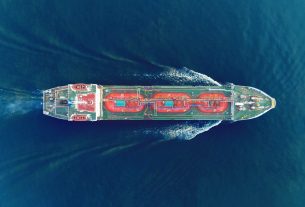United States – In place of a tall, cumbersome tower with blades at the top, Brandon Ennis, the offshore wind technical lead at Sandia National Laboratories, envisioned a towerless turbine with blades drawn taut like a bow.
With this design, it would be possible to locate the enormous generator that generates electricity from rotating blades closer to the water rather than on top of a tower 500 feet in the air. This lessens the top-heavyness of the turbine and lowers the size and expense of the floating platform that is required to keep it afloat. In 2020, Sandia submitted a patent application for the design.
But before he could put his plan into action, the group had to create software that could simulate how the floating platform and turbine would react to various wind and sea conditions in order to determine the best design for the entire system.
The Sandia team can now begin designing and optimizing their lighter floating wind turbine system because they have a usable design tool, or “drawing board.”
Lighter and less expensive turbines
The majority of the U.S.’s offshore wind blows over water that is deeper than 200 feet. It would be very expensive to construct the rigid support structures that wind turbines typically use at those depths. However, as cities and states get closer to achieving their net-zero emission targets, floating wind turbines could be a significant contributor to diversifying the sources of renewable energy and enhancing grid stability.
However, there are difficulties specific to floating offshore wind. The main problem is that supporting and maintaining wind turbines at sea is very expensive. To maximize power output while lowering costs, one Department of Energy Advanced Research Project Agency-Energy program aims to optimize the design of floating wind turbines, platforms, and control systems.
Nowadays, the majority of wind turbines are built around a tall tower with three blades rotating a horizontal shaft that powers a generator located behind the blades in the nacelle, the box at the top of the turbine that houses the rotor and other vital parts. However, Ennis noted that there are other ways to design a wind turbine. Some turbines have a generator below a pair of blades or more that are supported by a vertical shaft. According to Ennis, this design, known as a Darrieus vertical-axis wind turbine, can weigh less and has a lower center of gravity than a conventional wind turbine, but one of its biggest problems is that it is difficult to shield the turbine from strong winds.
The blades of conventional horizontal-axis wind turbines can turn away from strong winds that could cause damage, but the Darrieus design captures wind from all directions. The central vertical tower is replaced by taut guy wires in the Sandia design. To maximize energy capture while minimizing strain, these wires can be shortened or lengthened to adapt to shifting wind conditions. The weight of the turbine is further decreased by using wires in place of the shaft, making the floating platform even smaller and less expensive.




